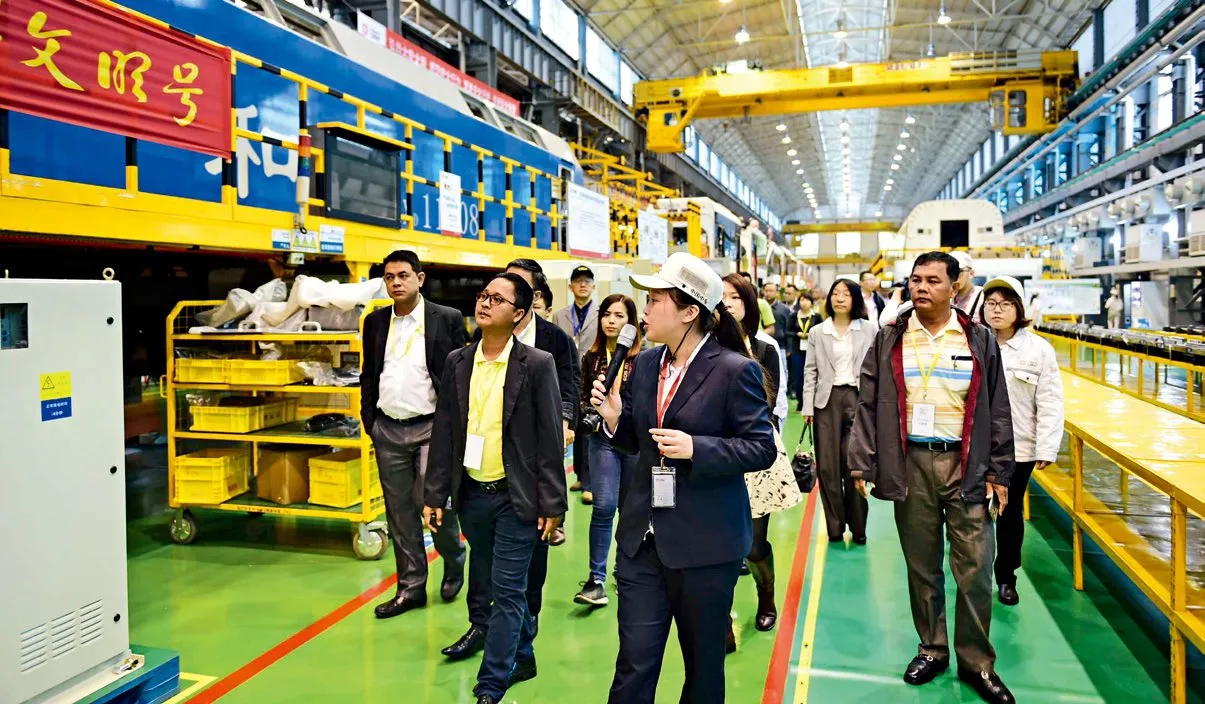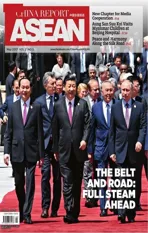ASEAN Journalists Explore Central China
2017-07-18By
By
ASEAN Journalists Explore Central China
ByZhang Yan
Reporters from mainstream publications across ASEAN witness development in Hunan and Jiangxi provinces
The China-ASEAN Media Journey on the 21st Century Maritime Silk Road 2017, cosponsored by the State Council Information Office of the People’s Republic of China and the ASEAN-China Center and organized by China Report Press under China International Publishing Group, concluded on April 27. Twenty journalists from 17 mainstream ASEAN media outlets, including Brunei’s Borneo Bulletin, Cambodia’s Khmer Times, Singapore’s Zaobao, Thailand’s Thairath, Malaysia’s China Press and the broadcast media of the Philippines and Laos were invited to visit Hunan and Jiangxi provinces to witness for themselves the cultural, economic and social development of central China.
The 11-day journey themed on “industrial transformation and international cooperation in central China” took the journalists to seven cities and counties, including Changsha, Zhuzhou and Xiangtan of Hunan Province, and Nanchang, Jiujiang, Jingdezhen and Wuyuan of Jiangxi Province. The reporters visited a number of companies and organizations, including the SANY Heavy Industry Company, the Hunan Broadcasting System, the CRRC Zhuzhou Locomotive Company, Jiangling Motor Company (JMC), SINOPEC Jiujiang Company, the Jingdezhen China Ceramic Art Museum and others.
Thumbs up, Belt and Road
“When China first proposed the Belt and Road Initiative, many people in ASEAN countries were a little skeptical,”explained Malai Bobby from Borneo Bulletin.
“However, over the last three years, China has done a lot, especially in terms of economic and trade cooperation, infrastructure construction and cultural exchanges. These efforts have helped ASEAN and the world as a whole understand that China has been pushing forward a development model of win-win cooperation. Thumbs up, Belt and Road!”
Pham Anh Minh from Vietnam Investment Review commented that many Chinese enterprises, both large and small, have participated in the building of the Belt and Road in a positive and pragmatic manner.
"China has made remarkable achievements in the globalized market," Pham said. "I think the priority of future cooperation lies in quality, which will be vital for the success of the Belt and Road."
On this journey, the ASEAN journalists said they were impressed with China’s cooperation projects with their respective countries. Most of their questions focused on thetechnical aspects of current projects.

ASEAN journalists visit the locomotive workshop at CRRC’s Zhuzhou plant.

ASEAN journalists pose in front of a statue of Mao Zedong in Xiangtan, Hunan.
“What are your cooperation projects with Thailand? What are your plans for future cooperation?” Thaotagoo Natthaporn from Thairath TV asked representatives of SANY, a heavy machinery manufacturer based in Hunan. At Sunward Group, an intelligent construction machinery manufacturer also based in Hunan, her questions focused on the technical function and quality of the company's products, as well as their competitive edge and plans for future cooperation with Thailand.
Charm of Central China
This marked the first trip to central China for most of the ASEAN journalists, and many said they didn't have much understanding of this part of the country prior to the journey. Some had expected the region to be lagging behind in terms of economic development. However, what they found on their journey is that the central provinces in China differ from the more developed regions of China in terms of modes of development.
“I marveled at ‘Made in Hunan’ products at the beginning of the journey," said May Kunmakara, business editor of Khmer Times. "In Jiangxi, I found a China which is completely different from what I had in mind — this is a country that not only features outstanding industrial enterprises, but also bioagriculture, attractive tourism destinations and aquaculture. Its ceramics and traditional Chinese medicine are fascinating, too."
“Central China is home to a unique culture and has tremendous development potential," said Boncan Miriniza, senior news editor with the Philippine Broadcasting Service. She suggested that ASEAN countries should look toward this part of the country for cooperation.
Culture Is the Key
The year 2017 marks the China-ASEAN Year of Tourism Cooperation. A series of cultural exchange activities will be carried out to enhance the mutual understanding of the 2 billion people that live in China and ASEAN combined, which will further contribute to the confidence among nations.
“Economic and trade cooperation has been a priority area of ASEAN-China cooperation,” said Akhirul Anwar, manager of the Bisnis Indonesia Manado branch.“However, I think culture is the key that promotes the indepth development of bilateral relations. I’m very happy to see increasing cultural exchanges and cooperation between ASEAN and China, including cultural shows, tourism and the interactions between our universities.”
Meanwhile, the ASEAN journalists expressed their wish that an institutional communication platform could be established for information sharing, consultation and coordination with their Chinese counterparts.
During the journey, Kristina Juan, executive producer of the Philippine People’s Television Network, said that the average Filipino spends four hours and 17 minutes per day on social media sites such as Facebook and Twitter. WeChat is also popular in ASEAN.
“I’m so honored to have gotten to know so many friends on this journey," Juan said. "We traveled a lot and saw different things everyday. It was nice for us to be in the same WeChat group, so we can be ‘with’ each other even after the journey has ended."
